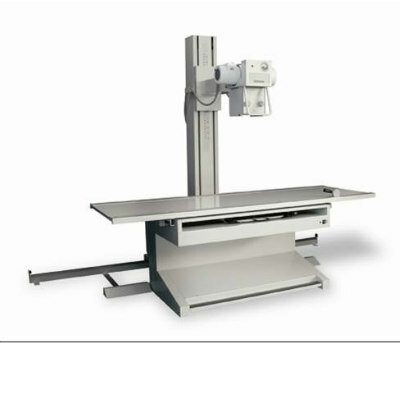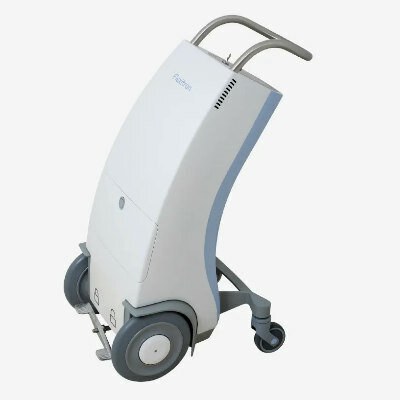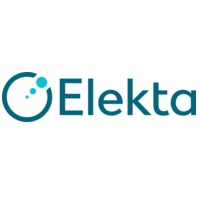New Treatment Combines MRI and Ultrasound to Control Prostate Cancer without Serious Side Effects
|
By MedImaging International staff writers Posted on 29 Mar 2024 |

Prostate cancer is the most prevalent cancer among men, affecting one in eight during their lifetime. Traditional treatments like radiation or surgery carry potential side effects, including urinary incontinence and erectile dysfunction, which significantly impact the quality of life. Now, new research has revealed the efficacy of a minimally invasive approach using MRI and transurethral ultrasound for prostate cancer treatment.
Researchers at the David Geffen School of Medicine at UCLA (Los Angeles, CA, USA) have found that a technique known as MRI-guided transurethral ultrasound ablation (TULSA) offers a durable alternative for whole-gland treatment and does not preclude future treatment with surgery or radiation. The TULSA procedure involves inserting a device through the urethra to the prostate, where MRI guides the precise placement of ultrasound elements for therapeutic purposes. MR thermometry helps in monitoring and controlling the temperature within the prostate, ensuring it exceeds 55 degrees Celsius for effective treatment while preserving surrounding nerve tissues. This outpatient procedure, requiring two to three hours under general or spinal anesthesia, has shown promising outcomes.
The study involved 115 men across 13 sites in five countries, with 25 undergoing subsequent traditional treatments due to residual or recurring tumors. The findings indicated notable improvements in cancer reduction, prostate shrinkage, and lower prostate-specific antigen (PSA) levels, a cancer marker. One year post-TULSA, 76% of patients had no detectable cancer in follow-up biopsies, with a median prostate volume reduction of 92% within a year and a significant drop in PSA levels from 6.3 ng/ml to 0.63 ng/ml over five years. TULSA's side-effect profile was markedly favorable when compared to conventional treatments, showcasing a high rate of continence recovery (92%) and erectile function preservation (87%) after five years.
The overall insights gained from the study included the identification of early TULSA failure predictors, such as urethral calcifications and procedural issues related to prostate swelling and alignment, leading to improved detection and management of these preventable errors during the procedure. This research underscores the significant role of interventional radiologists in prostate cancer treatment, similar to their contribution to treating other cancers like those of the lung, kidney, and liver. Their expertise in imaging and image-guided interventions, combined with ablation experience, make them a vital part of prostate cancer treatment.
“The success of TULSA represents a revolution in whole-gland treatment for prostate cancer,” said Steven S. Raman, M.D., FASR, FSIR, professor of radiology, urology and surgery at the David Geffen School of Medicine at UCLA. “We have more research to do, but if validated, TULSA has the potential to change the standard of care for thousands of men.”
Related Links:
UCLA
Latest MRI News
- PET/MRI Improves Diagnostic Accuracy for Prostate Cancer Patients
- Next Generation MR-Guided Focused Ultrasound Ushers In Future of Incisionless Neurosurgery
- Two-Part MRI Scan Detects Prostate Cancer More Quickly without Compromising Diagnostic Quality
- World’s Most Powerful MRI Machine Images Living Brain with Unrivaled Clarity
- New Whole-Body Imaging Technology Makes It Possible to View Inflammation on MRI Scan
- Combining Prostate MRI with Blood Test Can Avoid Unnecessary Prostate Biopsies
- MRI Improves Diagnosis and Treatment of Prostate Cancer
- Combined PET-MRI Scan Improves Treatment for Early Breast Cancer Patients
- 4D MRI Could Improve Clinical Assessment of Heart Blood Flow Abnormalities
- MRI-Guided Focused Ultrasound Therapy Shows Promise in Treating Prostate Cancer
- AI-Based MRI Tool Outperforms Current Brain Tumor Diagnosis Methods
- DW-MRI Lights up Small Ovarian Lesions like Light Bulbs
- Abbreviated Breast MRI Effective for High-Risk Screening without Compromising Diagnostic Accuracy
- New MRI Method Detects Alzheimer’s Earlier in People without Clinical Signs
- MRI Monitoring Reduces Mortality in Women at High Risk of BRCA1 Breast Cancer
- Breakthrough AI-Based Quantitative Brain Imaging in MR to Advance Neurology Care
Channels
Radiography
view channel
Novel Breast Imaging System Proves As Effective As Mammography
Breast cancer remains the most frequently diagnosed cancer among women. It is projected that one in eight women will be diagnosed with breast cancer during her lifetime, and one in 42 women who turn 50... Read more
AI Assistance Improves Breast-Cancer Screening by Reducing False Positives
Radiologists typically detect one case of cancer for every 200 mammograms reviewed. However, these evaluations often result in false positives, leading to unnecessary patient recalls for additional testing,... Read moreUltrasound
view channel
Deep Learning Advances Super-Resolution Ultrasound Imaging
Ultrasound localization microscopy (ULM) is an advanced imaging technique that offers high-resolution visualization of microvascular structures. It employs microbubbles, FDA-approved contrast agents, injected... Read more
Novel Ultrasound-Launched Targeted Nanoparticle Eliminates Biofilm and Bacterial Infection
Biofilms, formed by bacteria aggregating into dense communities for protection against harsh environmental conditions, are a significant contributor to various infectious diseases. Biofilms frequently... Read moreNuclear Medicine
view channel
New SPECT/CT Technique Could Change Imaging Practices and Increase Patient Access
The development of lead-212 (212Pb)-PSMA–based targeted alpha therapy (TAT) is garnering significant interest in treating patients with metastatic castration-resistant prostate cancer. The imaging of 212Pb,... Read moreNew Radiotheranostic System Detects and Treats Ovarian Cancer Noninvasively
Ovarian cancer is the most lethal gynecological cancer, with less than a 30% five-year survival rate for those diagnosed in late stages. Despite surgery and platinum-based chemotherapy being the standard... Read more
AI System Automatically and Reliably Detects Cardiac Amyloidosis Using Scintigraphy Imaging
Cardiac amyloidosis, a condition characterized by the buildup of abnormal protein deposits (amyloids) in the heart muscle, severely affects heart function and can lead to heart failure or death without... Read moreGeneral/Advanced Imaging
view channel
New AI Method Captures Uncertainty in Medical Images
In the field of biomedicine, segmentation is the process of annotating pixels from an important structure in medical images, such as organs or cells. Artificial Intelligence (AI) models are utilized to... Read more.jpg)
CT Coronary Angiography Reduces Need for Invasive Tests to Diagnose Coronary Artery Disease
Coronary artery disease (CAD), one of the leading causes of death worldwide, involves the narrowing of coronary arteries due to atherosclerosis, resulting in insufficient blood flow to the heart muscle.... Read more
Novel Blood Test Could Reduce Need for PET Imaging of Patients with Alzheimer’s
Alzheimer's disease (AD), a condition marked by cognitive decline and the presence of beta-amyloid (Aβ) plaques and neurofibrillary tangles in the brain, poses diagnostic challenges. Amyloid positron emission... Read more.jpg)
CT-Based Deep Learning Algorithm Accurately Differentiates Benign From Malignant Vertebral Fractures
The rise in the aging population is expected to result in a corresponding increase in the prevalence of vertebral fractures which can cause back pain or neurologic compromise, leading to impaired function... Read moreImaging IT
view channel
New Google Cloud Medical Imaging Suite Makes Imaging Healthcare Data More Accessible
Medical imaging is a critical tool used to diagnose patients, and there are billions of medical images scanned globally each year. Imaging data accounts for about 90% of all healthcare data1 and, until... Read more
Global AI in Medical Diagnostics Market to Be Driven by Demand for Image Recognition in Radiology
The global artificial intelligence (AI) in medical diagnostics market is expanding with early disease detection being one of its key applications and image recognition becoming a compelling consumer proposition... Read moreIndustry News
view channel
Bayer and Google Partner on New AI Product for Radiologists
Medical imaging data comprises around 90% of all healthcare data, and it is a highly complex and rich clinical data modality and serves as a vital tool for diagnosing patients. Each year, billions of medical... Read more




















